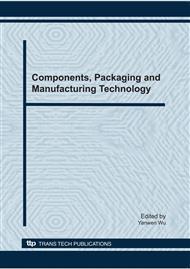p.77
p.83
p.90
p.96
p.106
p.111
p.117
p.123
p.130
A GA Based Measurement Method for Discontinuous Curve Fitting
Abstract:
Discontinuous curve fitting is the task of finding a suitable function which is best fitting to a given set of data points. Once the expression forms of function and of error are determined, curve fitting is regarded as an optimization problem. In this paper, a measurement method is proposed to optimize curve fitting problem. The proposed method is based on genetic algorithm, namely GAOCF (GA based Optimizer for Curve Fitting). The main advantage is that the proposed GA based method can skip the local optimum solutions, and find out better solution in a huge searching space. Consequently, some arc data will be used to verify the feasibility and effectiveness of the GA based measurement method proposed in this paper.
Info:
Periodical:
Pages:
106-110
Citation:
Online since:
January 2011
Authors:
Price:
Сopyright:
© 2011 Trans Tech Publications Ltd. All Rights Reserved
Share:
Citation:


